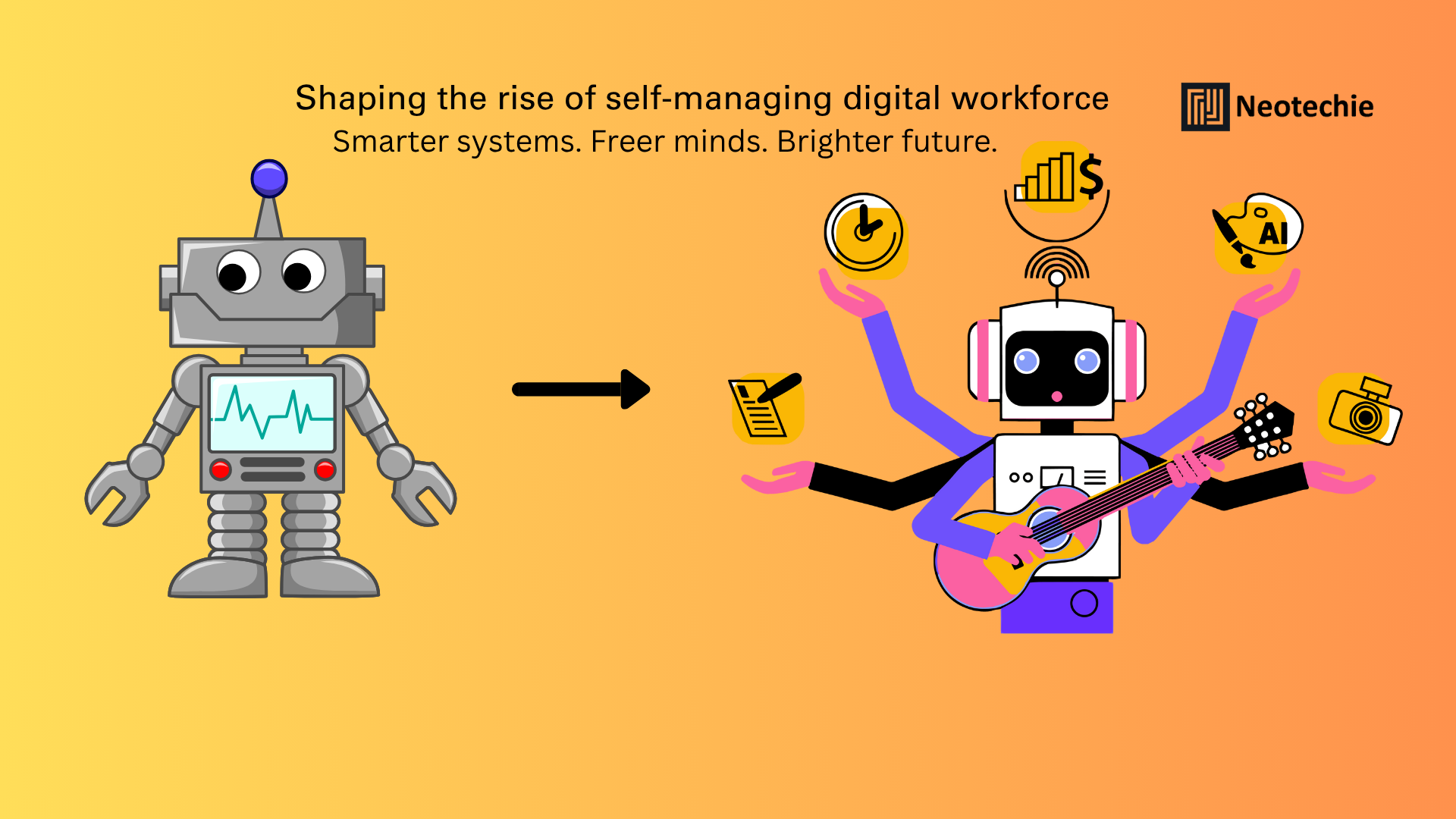From Automation to Autonomy – Preparing for Self-Managing Digital Workforces
What is Autonomous RPA?
Autonomous RPA is an evolution of traditional robotic process automation where bots move beyond executing predefined rules and tasks to making context-aware decisions, coordinating with other bots, and handling exceptions intelligently. Unlike conventional RPA that requires human intervention for unanticipated scenarios, autonomous RPA enables digital workers to operate independently, respond dynamically to changing conditions, and optimize workflows in real-time.
Autonomous bots leverage artificial intelligence (AI), machine learning (ML), and advanced analytics to learn patterns, predict outcomes, and make proactive adjustments to processes. They can collaborate across different systems, departments, and even geographic locations, creating a self-managing digital workforce capable of supporting complex enterprise operations.
Why Businesses Need Autonomous Digital Workforces
The business environment is increasingly volatile, with unpredictable market demands, regulatory changes, and workforce disruptions. In such an environment, relying solely on human intervention or static automation can limit organizational agility. Autonomous RPA addresses this by delivering several transformative advantages:
- Enhanced Agility: Autonomous bots respond immediately to process changes, exceptions, or anomalies, enabling businesses to adapt quickly without waiting for human decision-making.
- Continuous Process Optimization: By learning from past executions, bots continuously refine workflows, improve accuracy, and increase efficiency, driving ongoing operational improvement.
- Reduced Operational Bottlenecks: Workflows that previously stalled due to exceptions or resource constraints are now completed seamlessly, ensuring uninterrupted service delivery.
- Scalable Automation Coverage: Autonomous RPA allows enterprises to expand automation across multiple processes without proportional increases in oversight or human management.
- Strategic Focus for Employees: With bots handling complex repetitive and exception-based tasks, human employees can focus on higher-value activities, such as innovation, customer engagement, and strategic planning.
How Autonomous RPA is Achieved
Implementing autonomous RPA involves integrating AI and advanced analytics with robotic automation to create adaptive and intelligent workflows. Key steps include:
- Intelligent Decision Engines: Incorporate machine learning models to analyze patterns, predict outcomes, and make decisions in real-time, reducing the need for manual intervention.
- Self-Escalation Mechanisms: Bots identify exceptions, escalate critical issues to human supervisors when necessary, and reroute tasks to other bots for efficient resolution.
- Cross-System and Cross-Bot Collaboration: Digital workers communicate across multiple platforms and systems, ensuring seamless process continuity and data synchronization.
- Continuous Learning Loops: Bots track outcomes and refine their decision-making processes based on historical data, error patterns, and business rules.
- Governance and Compliance Oversight: A robust governance framework ensures that autonomous actions comply with organizational policies, regulatory requirements, and security standards.
How Neotechie Helps
Neotechie guides enterprises in transitioning from conventional task-based automation to self-managing digital workforces. Their approach includes:
- Strategic Assessment and Roadmap Development: Evaluate current automation capabilities, identify high-value processes suitable for autonomy, and develop a roadmap aligned with business goals.
- AI-Integrated Bot Deployment: Design and implement bots capable of learning, predicting, and making contextual decisions while collaborating across systems.
- Monitoring and Continuous Optimization: Track bot performance, refine AI models, and optimize workflows to ensure consistent efficiency and adaptability.
- Governance and Security Assurance: Implement policies and oversight mechanisms to ensure autonomous operations comply with data security, regulatory standards, and ethical automation principles.
- Driving Business Transformation: Neotechie ensures that autonomous RPA is not just a technical implementation but a strategic enabler. By freeing employees from repetitive tasks and enabling self-managing digital workforces, businesses achieve higher agility, operational resilience, and innovation capacity.
Driving Business Transformation with Autonomous RPA
Autonomous RPA is a powerful catalyst for business transformation. By integrating intelligence and adaptability into automation, organizations can scale operations seamlessly, respond rapidly to dynamic conditions, and enhance decision-making speed and accuracy. It transforms RPA from a support function into a strategic asset, enabling digital workers to handle complex tasks, collaborate effectively, and continuously improve processes.
Through Neotechie’s expertise, businesses unlock the full potential of autonomous digital workforces. The combination of AI, ML, and RPA fosters a new operational paradigm where humans and bots collaborate efficiently, critical processes operate uninterrupted, and organizations achieve sustainable growth, scalability, and a competitive edge.

